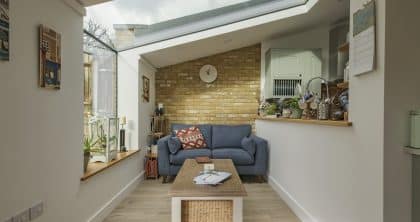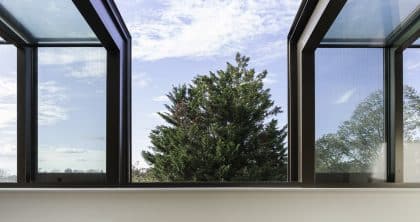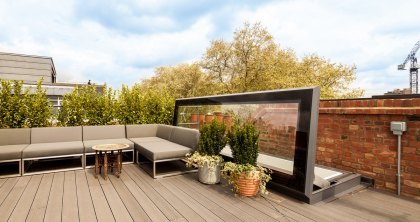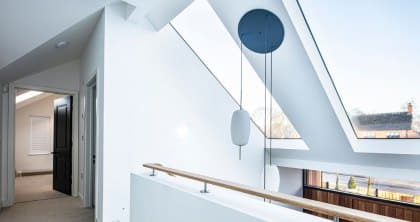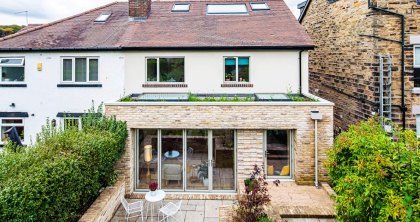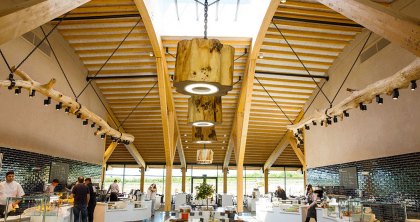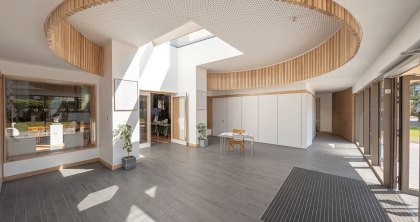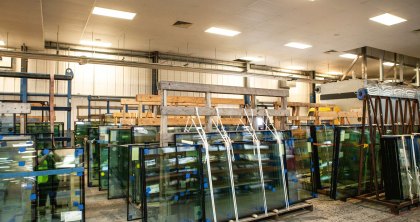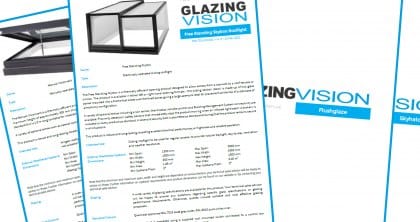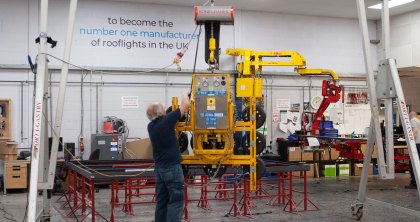Posted on July 17, 2015 in Blog
Sliding glass rooflights for flat roofs can have a hugely positive impact within a building, serving not only as a source of natural daylight but also as a means of natural ventilation, allowing air to circulate more freely within built environments.
In addition to this, some sliding glass rooflight designs allow the entire ceiling space to be opened up creating a unique connection with the environment outside and dramatically changing the look and feel of the buildings interior.
In other cases sliding rooflights can be manufactured as a glass box, allowing access to roof terraces at the touch of a button whilst increasing usable living space and property values.
These type of units by their very nature tend to be more complex in terms of design and operation; therefore care should be taken to ensure that the unit is completely safe to operate and offers the sort of functionality expected with what can sometimes be a substantial financial investment.
In this post we will discuss safety, security and operational aspects of sliding glass rooflights and how these should be considered when looking to specify such a unit for your project.
Safety
Sliding glass rooflights are not usually considered to present any real risk to the user, provided common sense is applied and the product is sourced from a reputable manufacturer. As with all overhead glazing it is critical that toughened safety glass is used throughout the design.
However this type of rooflight is often quite large, meaning that heavy sections of glass are travelling with moving components that inevitably present more safety considerations in comparison to a fixed unit.
It is essential that the moving sections of glass travel in a controlled manner to avoid damaging the rooflight framework, and also to avoid the risk of injuries relating to trapped fingers where access units are being used.
– Electronic control system
These control systems detect any form of obstruction on the rooflight using an electronic circuit, which measures the level of power the rooflight is drawing. If this reaches an abnormally high threshold, the control system automatically pulls the motor back into reverse and ensures that anything trapped within the rooflights’ frame will be automatically released.
– Proximity detectors
This feature is particularly suitable for sliding box rooflights used for access purposes. When the sliding glass rooflight is in operation, an infrared beam is projected onto a reflector opposite. If there is any form of interruption between the infrared beams it will automatically suspend the rooflights motion until restarted using the control switch.
– Low voltage system
Rooflights are very exposed to the elements so the development of low voltage systems significantly improves electrical safety within glass rooflights, particularly where they are installed in high humidity areas or being used for access.
Security
Although they are installed at roof level, depending on the architecture of your building, having an opening or access rooflight may pose a security risk without design consideration given to locking and security devices.
– Concealed mechanisms
Where possible all mechanisms should be hidden so that they cannot be tampered with or attacked; exposed belt drives are vulnerable and could be cut, allowing an intruder to manually open a rooflight.
Anti lift mechanisms incorporated into the rooflight design will improve security and prevent intruders from forcibly disengaging drive mechanisms to allow access via the rooflight, as well as one way clutch systems which stop motors being ‘back driven’ and forced open.
– Solenoid security bolt
This is often an optional extra but some manufacturers are starting to design in security features such as this as standard. A solenoid security bolt is simply another means of mechanically locking a sliding section to the supporting frame when in the closed position. When the unit is tripped by the user an electromagnet allows the bolt to retract and the unit to open; when it closes the bolt is forced shut by a spring.
– Keypad/pin number device
External keypads are very popular with access rooflights and can serve as a means of opening the rooflight from outside or if it has been tripped closed by a rain sensor and you are still on the roof.
Rooflight functionality
Safety and security should always be of primary concern, but there are several other factors, which you should think about when looking to include a high specification sliding rooflight in your scheme.
– Intelligent control switch – one touch push and hold
Like any window, door or even car sunroof sometimes you don’t want to open the unit to its full capacity. Look for products that can open partially and act as ventilation units as well as access, even better if they offer ‘one touch’ to open fully so you don’t have to hold down the switch whilst the rooflight retracts.
– Remote Controls
You probably have too many already but if you’re the type of person that has a remote control for your garage door, curtains or table lamps you’ll expect to be able to open your rooflight by remote control too. But remember to check the remote should be paired with your specific unit so that no other device can gain access.
– Rain sensors
Intelligent tech that senses moisture on a sensor and will close your rooflight if it starts raining will potentially avoid costly damage to the interior of your property. Ideally a rain sensor should include heated elements, which will prevent things like morning dew closing your rooflight unintentionally. Rain sensors are usually fitted directly to the rooflight frame but can also be installed on other parts of the roof, dependent on the prevailing wind and architecture of the building.
– Electronic thermostats
Just like the thermostat for your central heating this will allow your rooflight to automatically open when the temperature inside the building reaches a pre determined point.
– Building Management Systems (BMS)
For time when a remote control is simply not enough, you’ll want to connect your rooflight to your Building Management System. The best manufacturers understand this and will ensure that their design incorporates dedicated BMS inputs in their control systems.
– Manual override
Just imagine you’re out on the terrace and get caught out in a summer storm, you probably had the good sense to install a rain sensor right? Which has now done its job and closed the rooflight with you stuck outside. Fortunately, you also had the good sense to install an override option so you can gain access to your property and retreat from the weather.
Override systems can be as simple as a push button, traditional lock and key or even a pin-activated keypad. Internal override systems are also incredibly useful if there is ever a fault or power cut, allowing drive mechanisms to be manually disengaged if needed.
– Soft close mechanism
Not too dissimilar in principal to the soft close feature on your kitchen cabinets, this ensures that the rooflight closes gradually and gently, which is particularly beneficial for a heavy load. This helps the rooflights’ maintenance and longevity; the regulated soft close movement protects components within the sliding mechanism, as well as materials within the rooflight itself.
There is a massive range of intelligent control systems on offer for sliding glass rooflights, all of which cover important safety, security and operational factors. These should be carefully considered during the specification stage, in order to provide the end user with a product that provides them with maximum space and light, but also with the added peace of mind that their rooflight is both safe and secure.
For more information on correct rooflight specification, contact the technical team or book a CPD.

